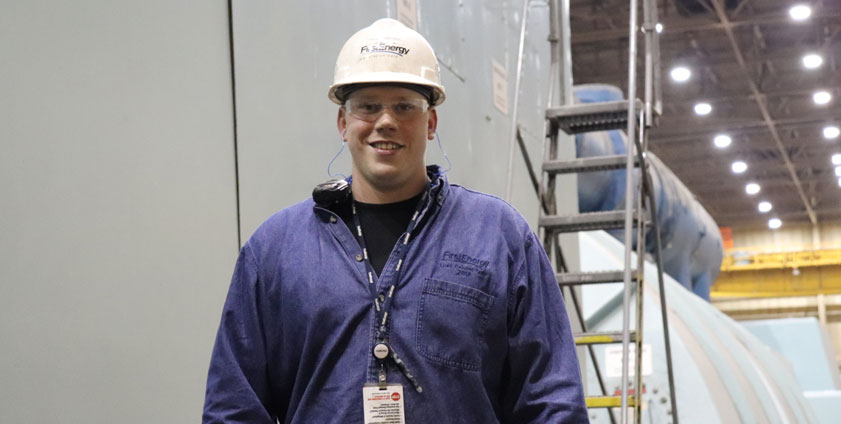Making a Good Catch

Tyler Snyder stands next to the Fort Martin Unit 1 generator.
February 21, 2020
Earlier this year, Fort Martin Power Plant Operator Tyler Snyder was making his routine rounds on the turbine deck when he heard an unusual noise.
“It sounded like a piece of tin rattling,” Tyler said. “I thought maybe a gauge line had come loose. You become familiar with the noises typically coming from the plant’s equipment and just know when something doesn’t sound right.”
Tyler brought in another plant operator – Charlie Landers – to help pinpoint the source of the unusual sound. They also alerted supervisors to the issue. During the next unit outage, a repair crew discovered three broken air flow straighteners in the Generator bus duct.
Ken Parsons, plant production superintendent, commended Tyler for his good catch. “If the broken air flow straighteners weren’t discovered, they could have caused a more significant issue,” Ken said. “This was a really good catch, enabling us to locate and correct a possible problem before it occurred.”
An area of focus in Regulated Generation, the good catch approach is now being rolled out across the FEU organization. Defined as “an event or circumstance which had the potential to cause an incident but did not actually occur due to corrective action and/or timely intervention,” the emphasis on good catches represents the importance of being proactive and improving safety and reliability.
“We encourage our employees to report anything they believe might possibly cause an issue or injury,” said Ken. “Tyler’s catch was the result of attention to detail. The turbine deck is a loud place, where employees wear hearing protection. It would have been very easy to miss the noise, or simply overlook it.”
Fort Martin Director Dan Coldren added: “There’s no overstating the importance of speaking up. It may turn out to be nothing, but at least we will have checked and alleviated a concern. But it could be significant, and if we don’t know about an issue we can’t address it. In this case, what we found gives us something to inspect during future maintenance outages.”